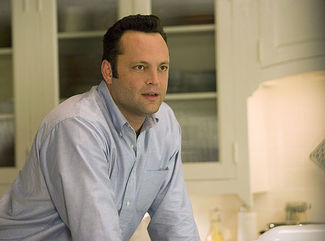
How much plastic are you eating today?
Have you recently eaten chips that said "Zero Trans Fat"? If so, you may have just eaten a lot more plastic than is good for you.
Trans fat is making headlines these days. It's been banned in restaurants in several countries. Is the FDA going to take some more action about it soon?
You've probably heard that trans fat is a very bad thing. It's linked to obesity, heart problems and high cholesterol. It's even worse than saturated fat, because though it raises the bad cholesterol levels just like saturated fat, it also lowers the amount of good cholesterol levels in your body - which even saturated fat is not guilty of doing.
Right now the Federal Dietary Guidelines recommends people eat less than two grams of trans fat per day. That would be equivalent to about one small glazed donut or one small handful of french fries cooked with trans fat.
The Institute of Medicine disagrees however, and says the only safe level of trans fat is zero.
The big food companies are allowed to put
"Zero Trans Fat" in big letters on their food packages even if the food inside contains trans fat. They can do this if the food contains less than half a gram
per serving. This is a bit of a joke as '
one serving' is usually defined as a tiny amount, maybe just a few chips, whereas we all know what happens to a bag of chips in one sitting once it's been opened. So quite conceivably, you could eat a bag of chips that said 'zero trans fat' and have actually consumed several grams of trans fat!
There is a very good interview on
NPR this week with Kim Severson. She is the author of
The Trans Fat Solution: Cooking and Shopping to Eliminate the Deadliest Fat from Your Diet
.
She says trans fat is the one food we shouldn't be eating at all.
It is a completely artificial substance that our bodies don't know how to process.
It's like putting plastic fat into our body.Trans fat (also known as '
partially hydrogenated oils') really started to get into our diets in a big way in the 1970's, along with the growth of the fast food industry. Trans fat is much cheaper than the more traditional oils. It can be reheated over and over without spoiling, and this is why it's so popular in the restaurant and fast food industry. It's also become a key ingredient in many packaged foods because it doesn't spoil as quickly as natural oils.
It looks like there is a movement starting to get underway to ban trans fat use in restaurants. Chicago may be the first city to do this in the United States thanks to the efforts of
Alderman Edward Burke. And last month a consumer group sued KFC to try to stop the chicken chain from cooking with trans fat. A KFC meal of three pieces of extra-crispy chicken contains 15 grams of trans fat, and a single pot pie contains 14 grams.
What are other
foods that are high in trans fats? Here's an excerpt from
Consumer Reports from a couple of years ago:
WHERE'S THE TRANS?
We tested mainly the top-selling foods that we knew or suspected would contain at least some partially hydrogenated oil. We found trans fat--up to 4 grams per serving--in many of those foods. But since it's the combined total of trans and saturated fat that matters most, the table in Bad fats in common foods lists the foods in decreasing order of total bad-fat content. There's little benefit in choosing a food that's low in trans fat if it's high in saturated fat, and vice versa. Banquet Chicken Pot Pie, for example, contained just a trace of trans fat. But its 7.5 grams of saturated fat made it the top artery-clogging product on our list. The surprising runner-up for top artery clogger: Mrs. Smith's Apple Pie, with 4 grams of trans and 3 grams of saturated fat per slice. Other foods that you might not suspect of harboring bad fats: Nabisco Wheat Thins, Kellogg's Cracklin'’ Oat Bran Cereal, Kellogg's Eggo Buttermilk Frozen Waffles, and Pillsbury Buttermilk Frozen Waffles. While the amount of trans and saturated fat in many of the other tested foods may seem low, keep in mind that serving sizes are often quite small. Orville Redenbacher's Popping Corn Movie Theater Butter, for example, contains about 1.5 grams of bad fat--but that's in a mere 6.5-gram serving, or 1 cup, not the big bowlful that many people eat.
 Note that our table doesn't list any fast-food french fries; McDonald's is reformulating the one such product we tested. But manufacturers'’ data provide some illuminating comparisons. Burger King's medium fries apparently supply more trans fat and more bad fat overall than any product in our table: 4.5 grams of trans plus 5 grams of saturated fat. Wendy's medium fries--a significantly larger serving--supply roughly the same total amount of bad fat: 6 grams of trans and 3 grams of saturated fat. McDonald's reformulated medium fries--about the same size as Wendy's--have less trans fat and less bad fat overall than either of those competitors. We plan to test french fries and other reformulated products in the near future to assess their bad-fat content.
Note that our table doesn't list any fast-food french fries; McDonald's is reformulating the one such product we tested. But manufacturers'’ data provide some illuminating comparisons. Burger King's medium fries apparently supply more trans fat and more bad fat overall than any product in our table: 4.5 grams of trans plus 5 grams of saturated fat. Wendy's medium fries--a significantly larger serving--supply roughly the same total amount of bad fat: 6 grams of trans and 3 grams of saturated fat. McDonald's reformulated medium fries--about the same size as Wendy's--have less trans fat and less bad fat overall than either of those competitors. We plan to test french fries and other reformulated products in the near future to assess their bad-fat content.
______________
The above photos of donuts and fries are by
pinkpucca and
klynslis.
 A new study has found that four out of every ten people who undergo weight loss surgery experience complications within half a year. Many of these complications are so serious they have to go to emergency rooms.
A new study has found that four out of every ten people who undergo weight loss surgery experience complications within half a year. Many of these complications are so serious they have to go to emergency rooms.  Studies are increasingly finding that the waist to hip ratio may be more relevant to determining if you are relatively healthy even if overweight than the BMI (body mass index) ratio.
Studies are increasingly finding that the waist to hip ratio may be more relevant to determining if you are relatively healthy even if overweight than the BMI (body mass index) ratio.  How much plastic are you eating today?
How much plastic are you eating today? Note that our table doesn't list any fast-food french fries; McDonald's is reformulating the one such product we tested. But manufacturers'’ data provide some illuminating comparisons. Burger King's medium fries apparently supply more trans fat and more bad fat overall than any product in our table: 4.5 grams of trans plus 5 grams of saturated fat. Wendy's medium fries--a significantly larger serving--supply roughly the same total amount of bad fat: 6 grams of trans and 3 grams of saturated fat. McDonald's reformulated medium fries--about the same size as Wendy's--have less trans fat and less bad fat overall than either of those competitors. We plan to test french fries and other reformulated products in the near future to assess their bad-fat content.
Note that our table doesn't list any fast-food french fries; McDonald's is reformulating the one such product we tested. But manufacturers'’ data provide some illuminating comparisons. Burger King's medium fries apparently supply more trans fat and more bad fat overall than any product in our table: 4.5 grams of trans plus 5 grams of saturated fat. Wendy's medium fries--a significantly larger serving--supply roughly the same total amount of bad fat: 6 grams of trans and 3 grams of saturated fat. McDonald's reformulated medium fries--about the same size as Wendy's--have less trans fat and less bad fat overall than either of those competitors. We plan to test french fries and other reformulated products in the near future to assess their bad-fat content. There's an interesting discussion going on over at
There's an interesting discussion going on over at 
 Vince Vaughn says he reached a body mass index of thirty in preparing for his role in "The Break-Up. The role called for him to pack on an extra 50 pounds. Vaugh is a big guy. Although I haven't been able to find his weight anywhere, his height is recorded as 6'5''. If his BMI reached 30 (which is the borderline between overweight and obese), he must have weighed somewhere in the range of 255 pounds.
Vince Vaughn says he reached a body mass index of thirty in preparing for his role in "The Break-Up. The role called for him to pack on an extra 50 pounds. Vaugh is a big guy. Although I haven't been able to find his weight anywhere, his height is recorded as 6'5''. If his BMI reached 30 (which is the borderline between overweight and obese), he must have weighed somewhere in the range of 255 pounds. Here's an incredible story of one woman who went to her doctor repeatedly, complaining of
Here's an incredible story of one woman who went to her doctor repeatedly, complaining of  Doctor Roizen has created a quiz that determines how old you really are. He says your 'real age' depends on your lifestyle rather than on the year you were born. And if you can change your lifestyle habits, you can look and feel a lot younger.
Doctor Roizen has created a quiz that determines how old you really are. He says your 'real age' depends on your lifestyle rather than on the year you were born. And if you can change your lifestyle habits, you can look and feel a lot younger.